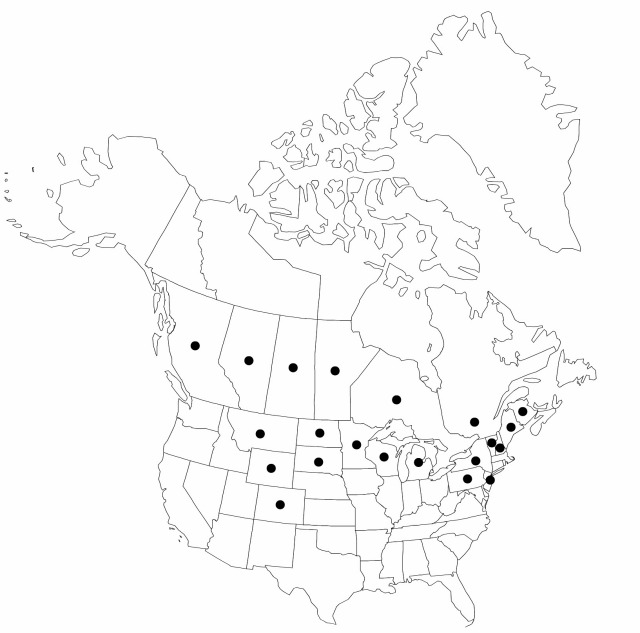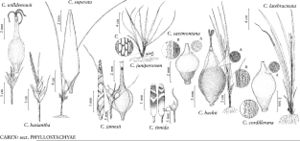Carex backii
in W. J. Hooker, Fl. Bor.-Amer. 2: 210, plate 209. 1839.
Culms 1.4–25 cm. Leaves: basal sheaths pale to medium brown; blades dull green to yellowish green, longer than stems, 1.3–5.4 mm wide, coriaceous, margins green, crenulate to scabrous. Lateral spikes 0–3, basal, on erect peduncles. Terminal spikes with staminate portion 2–3-flowered, 2-–3.6 × 0.4–1 mm; pistillate portion 2–7-flowered. Pistillate scales green, margins (2–) 2.5–6.5 mm wide, essentially concealing perigynia, apex acute, distal scales lanceolate to ovate, apex acute. Staminate scales green to pale-brown, ovate to oblong, 1.9–3.5 × 0.8–1.5 mm, margins enfolding scales above, white, often with reddish-brown tinge, apex obtuse. Anthers 0.9–1.3 mm. Perigynia dull green to dark olive green, ellipsoid to ovoid, 4.8–6.6 × 1.9–3.2 mm, loosely enveloping achenes, apex gradually tapering; beak 1.9–2.9 mm, smooth. Stigmas clavate, erect, shorth, thick, minutely papillose. Achenes 2.5–3.2 × 1.6–2.3 mm. 2n = 66.
Phenology: Fruiting spring–summer (late May–late Jul).
Habitat: Dry, rocky, open, or shaded slopes, ridges, and barrens, in hardwood, mixed, or coniferous forests, including pine plantations, on acidic and calcareous substrates
Elevation: 200–2100 m
Distribution

Alta., B.C., Man., N.B., Ont., Que., Sask., Colo., Maine, Mich., Minn., Mont., N.H., N.J., N.Y., N.Dak., Pa., S.Dak., Vt., Wis., Wyo.
Discussion
Selected References
None.
Lower Taxa
"shortened" is not a number."widest" is not a number."thick" is not a number.
